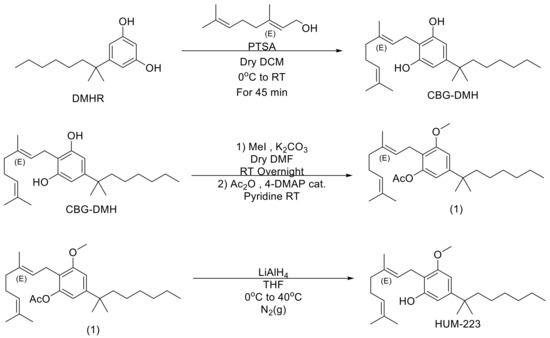
“Nonalcoholic fatty liver disease (NAFLD) is a major cause of chronic liver abnormalities and has been linked with metabolic syndrome hallmarks. Unfortunately, current treatments are limited.
This work aimed to elucidate the effects of three cannabis extracts on metabolic alteration and gut microbiota composition in a mouse model of NAFLD and obesity.
Male mice were fed with a high-fat diet (HFD) for 12 weeks. Following the establishment of obesity, the HFD-fed group was subdivided into HFD or HFD that was supplemented with one of three cannabis extracts (CN1, CN2, and CN6) for additional 8 weeks. Metabolic parameters together with intestinal microbiota composition were evaluated.
Except for several minor changes in gene expression, no profound metabolic effect was found due to cannabis extracts addition. Nevertheless, marked changes were observed in gut microbiota diversity and composition, with CN1 and CN6 exhibiting microbial abundance patterns that are associated with more beneficial outcomes.
Taken together, specific cannabis extracts’ addition to an HFD results in more favorable modifications in gut microbiota. Although no marked metabolic effect was disclosed, longer treatments duration and/or higher extracts concentrations may be needed. More research is required to ascertain this conjecture and to establish the influence of various cannabis extracts on host health in general and NAFLD in particular.”
https://pubmed.ncbi.nlm.nih.gov/35795290/
https://www.hindawi.com/journals/ecam/2022/7964018/
“Cannabis use is associated with reduced prevalence of non-alcoholic fatty liver disease: A cross-sectional study”


 “Chronic hepatitis B virus (HBV) infection may evolve into cirrhosis and hepatocellular carcinoma, and this progression may be accelerated by specific risk factors, including overweight and obesity. Although evidence for a protective effect of cannabis use on elevated body weight has been found for other populations, no data are available for HBV-infected patients.
“Chronic hepatitis B virus (HBV) infection may evolve into cirrhosis and hepatocellular carcinoma, and this progression may be accelerated by specific risk factors, including overweight and obesity. Although evidence for a protective effect of cannabis use on elevated body weight has been found for other populations, no data are available for HBV-infected patients.  “Interest in CBG (cannabigerol) has been growing in the past few years, due to its anti-inflammatory properties and other therapeutic benefits.
“Interest in CBG (cannabigerol) has been growing in the past few years, due to its anti-inflammatory properties and other therapeutic benefits. 
 “Obesity-related insulin resistance (IR) and attenuated brain insulin signaling are significant risk factors for neurodegenerative disorders, e.g., Alzheimer’s disease. IR and type 2 diabetes correlate with an increased concentration of sphingolipids, a class of lipids that play an essential structural role in cellular membranes and cell signaling pathways.
“Obesity-related insulin resistance (IR) and attenuated brain insulin signaling are significant risk factors for neurodegenerative disorders, e.g., Alzheimer’s disease. IR and type 2 diabetes correlate with an increased concentration of sphingolipids, a class of lipids that play an essential structural role in cellular membranes and cell signaling pathways. “Δ9-Tetrahydrocannabivarin (THCV) is a cannabis-derived compound with unique properties that set it apart from the more common cannabinoids, such as Δ9-tetrahydrocannabinol (THC). The main advantage of THCV over THC is the lack of psychoactive effects.
“Δ9-Tetrahydrocannabivarin (THCV) is a cannabis-derived compound with unique properties that set it apart from the more common cannabinoids, such as Δ9-tetrahydrocannabinol (THC). The main advantage of THCV over THC is the lack of psychoactive effects.  “(E)-β-caryophyllene (BCP) is a bicyclic sesquiterpene widely distributed in the plant kingdom, where it contributes a unique aroma to essential oils and has a pivotal role in the survival and evolution of higher plants.
“(E)-β-caryophyllene (BCP) is a bicyclic sesquiterpene widely distributed in the plant kingdom, where it contributes a unique aroma to essential oils and has a pivotal role in the survival and evolution of higher plants. “The endocannabinoid system (ECS) is natural physiological system in the humans. The presence of the ECS system involves different roles in body. The endocannabinoid system involves regulation of most of the centers, which regulates the hunger and leads to changes in the weight.
“The endocannabinoid system (ECS) is natural physiological system in the humans. The presence of the ECS system involves different roles in body. The endocannabinoid system involves regulation of most of the centers, which regulates the hunger and leads to changes in the weight.